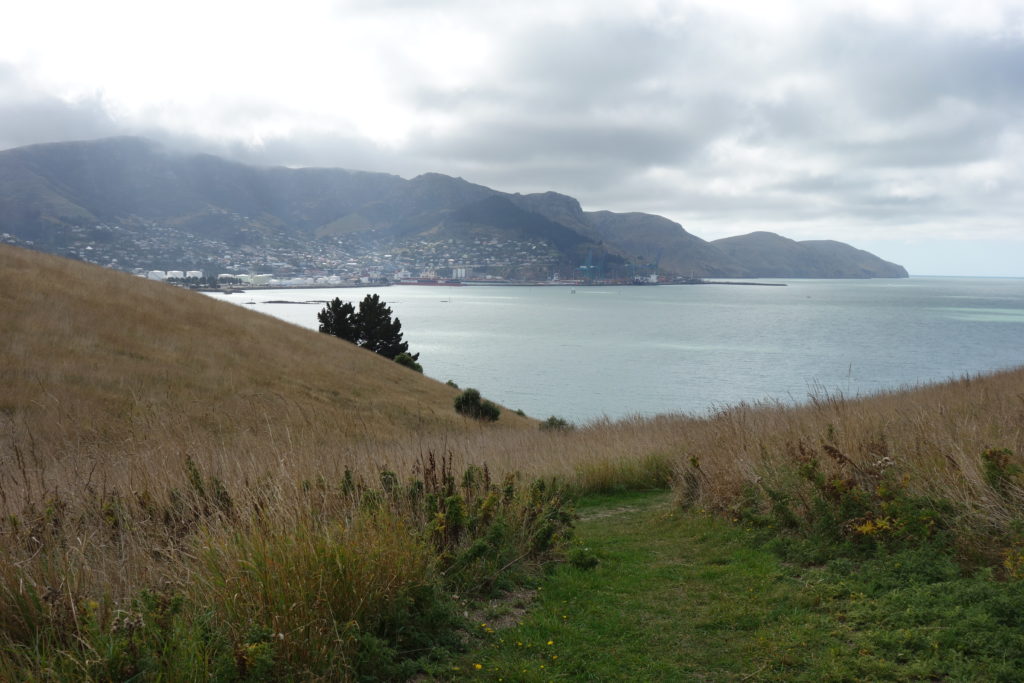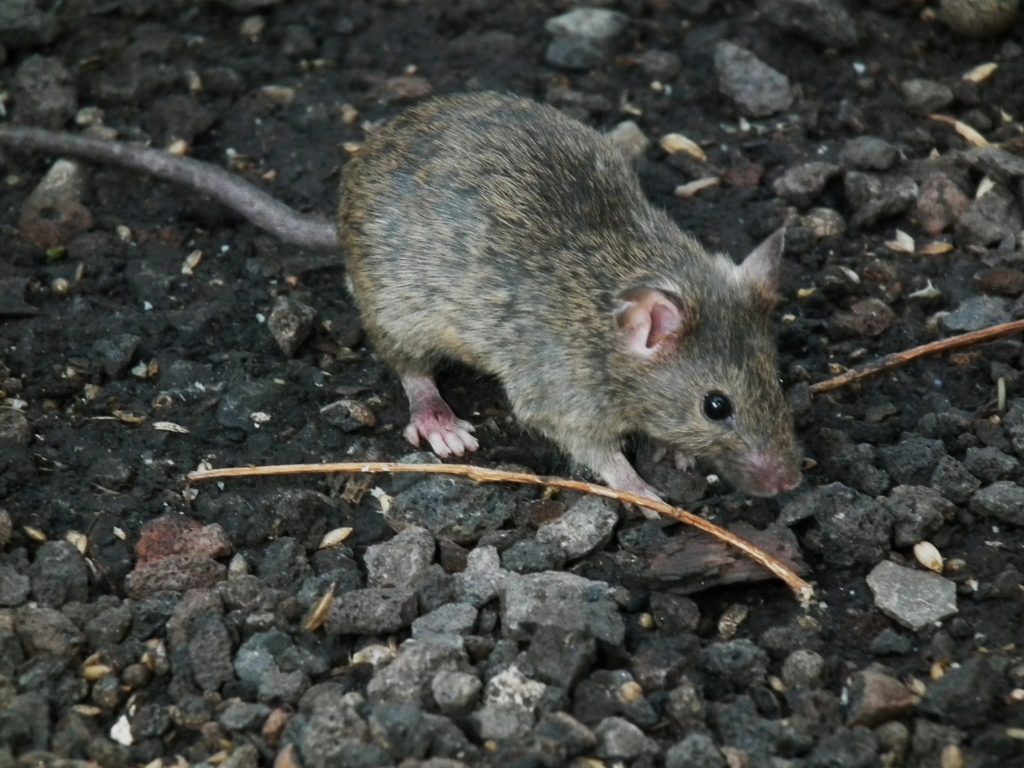Canterbury’s Quail Island Ecological Restoration Trust has been working with Department of Conservation staff and researchers from Lincoln and other universities to eradicate introduced mammals from the island and document their processes, successes and learning outcomes in an article recently published in the New Zealand Journal of Zoology.

“Ōtamahua/Quail Island is an 85 ha Recreation Reserve in Lyttelton Harbour. It is being ecologically restored and cats, hedgehogs, rabbits, mustelids and rats have been eradicated. However, the house mouse (Mus musculus) survived two eradication attempts, a bait station operation in 2002 and an aerial operation in 2009.”

There were some unexpected successes early in the project when the rabbit eradication also led to a substantial knock-back of rodents.
“In 1997 Pindone cereal bait (0.25 g/kg) was aerially applied to eradicate rabbits and almost eradicated the rats and mice. Rodents were not detected until 2000.”
Mice have, however proved a huge challenge for the restoration project in the longer term. Making things particularly difficult, is the close proximity of Quail Island to potential reinvasion sources and its open public access making reinvasion from boats another possibility.
After humans, house mice are the most widespread mammals on Earth. There are 3 recognisable sub-species, all present in New Zealand, so modern genetic techniques mean that in some situations the source of a population – be it reinvasion or remnant survivors of an eradication operation – can sometimes be determined and this was one aspect of the Quail Island study.
“Mouse sign was simultaneously detected at seven sites around the island 6 months after the aerial operation. Tails were collected from trapped mice on Quail Island, the adjacent mainland and on the stepping-stone island (King Billy) to undertake DNA analysis. Little genetic discrimination was observed between samples obtained after the 2009 aerial bait operation, and samples from before or outside of the bait drop. By contrast, samples taken from a location 15 km distant were genetically distinguishable.”
One pregnant female mouse would be enough to repopulate the island, but it seems likely that remnant populations of survivors were the main source of the mice detected after 6 months.
“The appearance of mouse sign simultaneously at seven locations spread around the outskirts of the island suggested several pockets of survivors growing in abundance. Reinvasion of mice from a boat or via Moepuku Point would likely have shown a single locus of activity; however, mice were also trapped on King Billy Island a week prior to being detected on Quail Island. The mouse beneath the cliff with differing genetics to the rest of the post-operation Quail Island mice raises the possibility of a secondary colonisation pathway, possibly by boat. Clearly using mouse genetic material to discriminate survivors from reinvaders is a powerful tool which should be utilised more.”
Issues with getting an even and effective distribution of bait during the aerial operation may have been one of the reasons that the aerial eradication attempt failed.
“Data on aerial bait deposition, bait degradation, mouse resurgence and non-target mortalities were collected. Brodifacoum bait deposition in many areas was considerably lower than the prescribed rate of 8 kg/ha. On the coastline areas, the mean amount of bait deposited on the ground was 8.2±0.8 kg/ ha; however, deposition rates elsewhere on the island averaged only 3.2±0.3 kg/ha, less than half of what was planned. There was a significant linear response of bait deposition increasing towards the coast of the island.”

Intensive trapping was also trialled in a 2 hectare area as a possible strategy to regulate the mouse density. Two trap designs and three bait types were used.
“Two types of trap were used: Victor Easy Set and Ka Mate reverse-bait mouse traps (Ka Mate Traps Ltd). The reverse-bait trigger is a significant modification in trap design as it requires the rodent to remove solid bait from beneath the trigger making the trigger mechanism more stable. Unlike conventional snap traps, the Ka Mate trap cannot be prematurely sprung by weight on the trigger by non-target species such as lizards or birds walking upon it. Ka Mate traps kill with more head/neck strikes than Victor Easy Set snap traps.”
Traps were baited with popcorn kernel, peanut butter and popcorn kernel plus peanut butter.
“To increase the attractiveness to mice, popcorn kernel was soaked in peanut oil prior to using in traps. Traps were inspected once or twice a week by volunteers and Trust employees. They recorded if a mouse was trapped, traps were set off with no mouse caught or set with bait gone. Mouse trapping data indicated that abundance was highest in May and lowest in January.”
“Peanut butter in the Victor traps was the best trap/bait combination. Corn in Ka Mate traps was the second best option when mice were at higher trapping rates. Where larger densities of mice were present peanut butter in Victor traps caught significantly more (15.2%) mice than corn in Victor (7.1%) or Ka Mate traps (5.9%). Where mice were less abundant there was no significant difference between corn (5.0%) and peanut butter (4.4%) used in Victor traps but when the two baits were combined, trap catch was significantly higher (12.1%).
The aerial operation led to some non-target deaths of birds, while cave and ground weta were suspected of removing peanut butter bait from the ground traps.
“Ten or 11 non-target bird species were found dead soon after the brodifacoum aerial operation. Mallard ducks were the most common species found dead, followed by pheasant.”
“In traps where both baits (peanut butter and corn) were used together, the corn remains as a mouse bait even if the invertebrates remove the peanut butter. Cameras placed in front of traps where this occurred identified invertebrates, especially wētā feeding on peanut butter during the night. Baits need to be more mice-specific in order to increase the trap efficiency and prevent non-target species getting trapped.”
Hawks also got in on the act, possibly finding an easy source of food in the trapped mice.
“Traps proved to be reliable, especially in autumn when the mouse population is the highest. However, some traps (particularly Victor snap traps) sprung without catching mice, affecting the trapping efficiency. Australasian harriers (Circus approximans) were often seen flying around the mouse trapping area and a cache of traps found at a nearby rock suggested these harriers were responsible for removing them and springing some of the traps found metres away from their initial location.”
The project team identified several factors that ultimately led to a failure to eradicate mice from the island.
“As seen in the 6 month period after the second aerial eradication attempt, mice can be reduced to a very low, undetectable level. However, we believe that several factors were critical in the ultimate failure of the operation. First, the helicopter delivered only half the correct amount of bait to the ground in many places. Second, the extensive areas of dense exotic grasses provide a good habitat in terms of food (grass seed) and cover. The operation was carried out in winter when the population was at its lowest and food sources were at a minimum. Although this eradication operation was undertaken by a charitable Trust with limited funds, the Trust did consult widely with the DOC eradication professionals.”
“The poor coverage of bait does underline the importance of ground-truthing, but this needs to be undertaken immediately so that additional bait can be applied on the same day. Intensive trapping of mice did not significantly reduce the tracking rates compared to outside of the trapping area, but additional trapping rows would have likely made a difference to trapping rates. Victor snap traps were more efficient than Ka Mate traps, and corn and peanut butter was a better bait than peanut butter alone. These bait combinations could be useful where similar interference by non-target invertebrates or lizards are an issue.”
This research is published in the New Zealand Journal of Zoology. Only the abstract is freely available online to non-subscribers.
Mouse management on Ōtamahua/Quail Island—lessons learned (2018)

